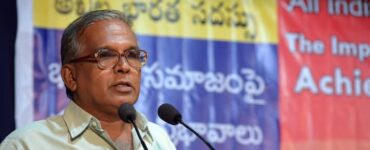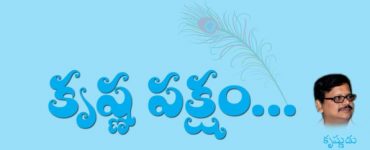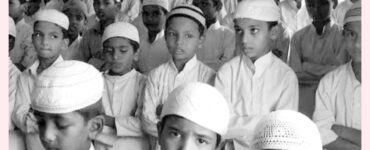“ I am the voice of the oppressed, the downtrodden. Wherever there is suffering, I make it a subject of my writing” – Rita Chowdhury
A committed artist cannot ignore the society he / she lives in. When the surroundings are desultory without offering any hope for the survivors, the devoted artist can never be neutral. The restlessness created by the fractured society naturally gets reflected in the works of the artist. We have several examples from across the world portraying the loss of self, identity, frustration, and hopelessness.
Post-independent India witnessed a remarkable change in the production of fiction and its techniques of presentation. Indira Goswami, Chandraprasad Saikia, Lakshminandan Borah, Arupa Patangia Kalitha and Rita Chowdhury are noteworthy contributors to Assamese fiction.
Rita Choudhury (1960) is one such novelist and poet from Assam. Born at Nampong of Tirap district of Arunachal Pradesh, Rita made a significant impact on Assamese literature. Her family moved to Guwahati in 1980, during the Assam Movement. She got involved in it and was jailed many times. She published her first novel in 1981 during her participation in the movement. Rita’s career as an artist began as a poet and she gradually switched over to writing prose. She has penned novels, short stories and essays and in each of them she portrayed the travails of Assam and its disturbed psyche. She often records the tormented social conditions, cultural differences and the shattered experiences of the marginalised communities.
Emerging as a major novelist Rita Chowdhury has fifteen novels to her credit : Abirata Jatra(Relentless Journey)-1981, Thirthabhoomi(Pilgrimage)-1988, Maha Jibanar Adarshila(Foundation of a Great Life)-1993, Nayana Tarali Sujata(Tale of a Meteor)-1998, Ragmalkosh-1999, Jala Padma(Water Lotus)-1999, Hridoy Nirupai(The Heart is Helpless)-2003, Deo Langkhui(The Divine Sword)-2005, Ei Samoy-Xei Samoy(These Times and Those Times), Makam(Golden Horse)-2010, Rajib Eshwar, Jahnabi, Mayabritto(Circles of Illusion)-2012, Makam(Eng)-2015, Bibranta Bastab(2015) and Chinatown Days(2018).
All her novels hover around Assam and its social conditions and political movements. As a resolute participant in the movements and as a writer Rita reflects the torn fabric of Assamese society and its culture against the forlorn human psyche. She proves how power structures play with the shelterless and defenceless people who are reduced to mere creatures for a hopeless survival. She portrays the inevitable human emotions and feelings too but against the backdrop of politicised conditions and self-centred social divisions.
Right from ‘Abirata Jatra’ (The Relentless Journey)(1981) to ‘Chinatown Days’ (2018), Rita’s attention from the social inequalities, divisive politics, cultural politics and hypocrisies has never been diverted. All her novels display her devout stance as a representative of the tormented subalterns.
The other two novels ‘Deo Langkhui’(2005) and ‘Makam’(2010) stand out as masterpieces by focusing chiefly on economic disparity, regional and cultural complexities, broken identities, fractured boundaries and marginalised communities.
‘Deo Langkhui’ (The Divine Sword)(2005), unveils some important aspects of the then-contemporary Tiwa society and their customs and traditions. The novel is based on the historical evidence of the then Tiwa kingdom. The protagonist is the royal lady Chandraprabha, the banished queen of Pratap Chandra. He banishes her for her freedom and for her intimacy with the Gova king. The Gova king reveals his chivalry by accepting Chandraprabha as one of the members of his kingdom. In the Gova kingdom, Chandraprabha makes herself familiar with the customs of the people, and she even changes her former identity to Konchari, a Tiwa name for women. Rita throws light on the social, cultural and historical aspects of Assam. She also refers to Jonbeel Mela, a symbol of union between the upper and lower Assam, which becomes not only a place of exchanging merchandise, but also a place for exchanging hearts. The book is a detailed account of the times of the then Assam. It is all about romance, conflict, betrayal, aggression and loyalty. The novel can be read as a fantastic story, as a historical novel, or as an epic. Rita received the Sahitya Akademi Award for Deo Langkhui.
Translated as ‘China Town Days’ in 2018, by the author herself, ‘Makam’ captures the fractured identity of the Chinese – Assamese community due to their forced deportation to Maoist China during 1962 Sino-Indian war by the Indian political power structures. Set in the backdrop of Assam’s tea gardens, in a small town Makum, the novel explores the sorrow stricken lives of tea plantation workers, the intermarried Chinese and the local Assamese and their struggles for a peaceful life. It deals with the lives of the Chinese people who were brought to India as tea garden workers during the British Raj in India. They had to leave Assam as a result of the Sino-Indian war in 1962. These were not accepted in either of the countries and Rita describes their poignant story of trauma they faced for survival, due to the controversial McMahon line issues.
The conflict is not between Chinese and Indians, but between Indians and Indians too. Chowdhury brings in the moving thread of many lives to one place and weaves out a saga of sorrow, racial hatred, politics, police raids and forced separation from the dear ones. The novelist projects the harsh realities and challenges faced by the workers, the inhuman attitudes and conditions that surround and humiliate them due to social hierarchies. Rita portrays how economic hardships reduce humans to insect-like creatures. We understand how the class and caste conflicts and exploitative practices prevalent on tea estates shatter the dreams and aspirations of the plantation workers despite their resilience. The challenging and unforgiving environment is created by man against his own fellow beings and the reason is greed for money and power structures. Taking ‘tea’, the most famous commodity of Assam, Rita portrays how man is reduced to the state of a commodity.
‘Popiya Torar Xadhu’ (Tale of a Shooting Star), ‘Jala Padma’ (Water Lotus), ‘Mayabritto’ (The Circle of Worldly Illusion) , ‘Ei Samoy Sei Samoy’ (These Times and Those Times) are some other noteworthy novels of Rita Chowdhury.
Mayabritto exposes a different side of Chowdhury – a deviation from the perspective of historical novels. This opens up the circle of illusions like women’s emancipation, life of new generations, the big dam movement, love, and pilgrimage.
The Assam movement (1979-85) was triggered by “Assamese sub nationalism” as a result of the migrant issue from East Bangladesh, as a large number of these migrants eroded into the very identity of the Assamese. The Assam movement was actively steered by the ‘All Assam Students Union’ supported by the civil society. Since the 1980s, Assam had attracted a large number of crowds from other parts of Asia, especially from the densely populated East Bengal. This had created pressure and coupled with the fear of the Assamese losing their socio-political identity, this became the immediate motivating factor for the Assam Students’ Movement.
It was actually a popular outburst against decades of economic neglect of the state by the Central Government, finally leading to the formation of Government by Asom Gana Parishad AGP in 1985 a newly formed political party of AASU. The dream of scores of people for a reform, for an assertion, soon turned into a disillusion eventually leading to many new movements for identity like Bodo land.
‘Ei Samoy Sei Samoy’ (These Times,Those Times) reflects the identity crisis experienced by the native, deported and migrated workers. When there was an influx of people from other parts of the country in the form of migration due to various reasons, there appeared an identity crisis by the mainstream Assamese, by various ethnic and minorities and by various Language groups of Assam.
‘Those Times’ stood for a collective spirit enthused towards common human good , whereas ‘These Times’ are fractured with divisive, self-centred interests and identity politics is used as a weapon for political mileage.
The narratives of Aditi, the protagonist of the novel voice out the hopes and aspirations of the civil society during the time of the Assam Movement and its disillusionments after. She recalls the beginning of the movement when the people protested against the attitude of the centre. She talks about ‘our desh’ while referring to Assam, actually a state in India. Rita presents those scenes of overwhelming enthusiasm with ‘slogans written on the walls, passers by looking and sharing with fellow men, and the ripples of discussions that engendered the spirit of patriotism to preserve Assam national Identity.’ Though people of different communities worked together they never thought that they were different.
Contrasting this scene with the present, Rita makes Kasturi, the younger daughter of Aditi talk about the change thus:
‘Now instead of the common bond of unity, everybody has become everybody’s enemy. Most of the communities living in Assam had asserted their own identities; they did not want to conceal their identities beneath the cover of Assam.’
Rita portrays how the ideological dreams of Aditi have come down shattered. She watches leaders getting infested by the venom of power. Thus ‘These Times’ and ‘Those Times’ she shows the shattered hopes of the civil society that dreamt of a new world of hope.
Rita Chowdhury, who started her life as an activist, worked as a professor and got married to an activist turned politician of the Assam Students Movement. She believes that women should break the mould. Despite hard conditions, she wants to use her voice, which is her pen. She always wants to represent the ‘voiceless sections’ of society. She received numerous awards for her achievements as a writer including the prestigious Sahitya Akademi Award for her novel ‘Deo Langkhui’ in 2008.
***









Add comment